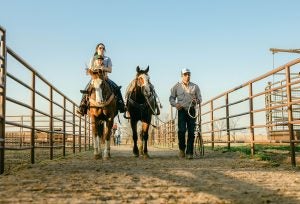Farm transition planning doesn’t happen overnight. Here are 5 things to do right now that will help ensure the success of your operation for generations to come.
Farming and ranching operations aren’t just family businesses, they’re legacies spanning as many as six or seven generations. Keeping the legacy alive is part of the job, and often the most difficult.
A successful transition is critical to a family’s legacy, and yet farm and ranch families tend to be unprepared when the time comes to hand it over to the next generation. Duane Hund, farm analyst and director of the Farm Analyst Program with Kansas State University, has spent his career facilitating succession planning meetings with families. He breaks down five areas to focus on during the transitioning process.
1. Get a plan in writing
Hund says the first question often asked is, “When do we get things in writing?” The short answer is as soon as possible.
If a son has 20 to 25 years invested in the farm and Dad’s health is failing, it’s not the time to start making plans. Once everyone is at the table and the plan is typed up, don’t let it sit on a shelf in the attorney’s office. The goal should be to start early and meet often.
2. Hand over the reins — a little
Too much or too little leadership can cause conflict quickly. Hund often works with farmers or ranchers who want their sons or daughters to return to their operations, but never hand the reins over for any serious decision-making.
“To have a successful retirement you have to train your successors well,” Hund says. “This isn’t something that’s going to happen overnight. It’s a process. We need to have at least some type of an outline so we begin that process and give the son [or daughter] the ability to learn by doing.”
Hund’s greatest piece of advice to young people returning to home is to work for someone else first.
“When I counsel graduates form K-State, which I do quite often, they ask, ‘How long will it take before I know things are going to be settled?’ I say plan on five years,” Hund says. “Go work for somebody for 2 to 3 years, get a good understanding of what life is like outside the operation you’re going home to, and when you do go home, use that information you gained to help you be a better manager and communicator.”

3. Communicate
Communication could be named as the top challenge for transitioning farm and ranch families. At a 2015 conference in Manhattan, Kansas, Charlie Griffin, former research assistant professor with the School of Family Studies and Human Services at K-State, shared a quote by Robert Fetsch with Colorado State University Cooperative Extension: “Ranchers and farmers are telling us their weakest link is not technology nor information. Their weakest link is human relationship management.”
Transition Planning: 12 Steps to Keep the Family Farming, a document by K-State’s Department of Agricultural Economics, states: “It is important to identify the strengths and weaknesses of the individuals involved in farm transitions. People must be in positions in which they can thrive and contribute to the operation’s success.” The document continues, “Without communicating the skills and desires of the successor, many transitions either continue in conflict or fail altogether.”
Hund tells families “transparency is critical.” It’s important for children to listen to their parents and what they think is right, while also communicating what they think needs to change.
4. Know the operation’s financial situation
Without knowing the operation’s finances, “you could be stepping off a cliff or onto a really successful road,” Hund says.
Business finances should be shared. If a parent won’t share the farm or ranch’s finances, it’s a red flag. Unknown debts can cause a mess for the next generation.
5. Ensure the legacy can continue
Hund recalls one family: Parents and four siblings, one of which planned to return to the farm following college. The parents concluded their assets would be divided evenly among the siblings, leaving the one returning to buy back 75 percent of the operation. It just doesn’t work, Hund says.
In the spirit of sharing alike, Hund has a few recommendations. First, determine how much the returning sibling has helped or will help the operation accumulate. Second, determine the discount that will be put in place to allow the sibling who has returned to buy back the remainder of the operation. That discount could be as much as 50 percent, he adds. A financial planner or farm analyst can help determine what an operation can afford to avoid jeopardizing the legacy.
K-State offers several resources for farm and ranch transitioning on the Kansas Agricultural Mediation Services website, as does K-State’s agmanager.info. Many colleges and universities offer similar services — check with your state’s extension service for more information on farm and ranch succession planning and transitioning.
Shelby Mettlen is a writer, photographer, and daughter of a fifth-generation farmer from central Kansas.



